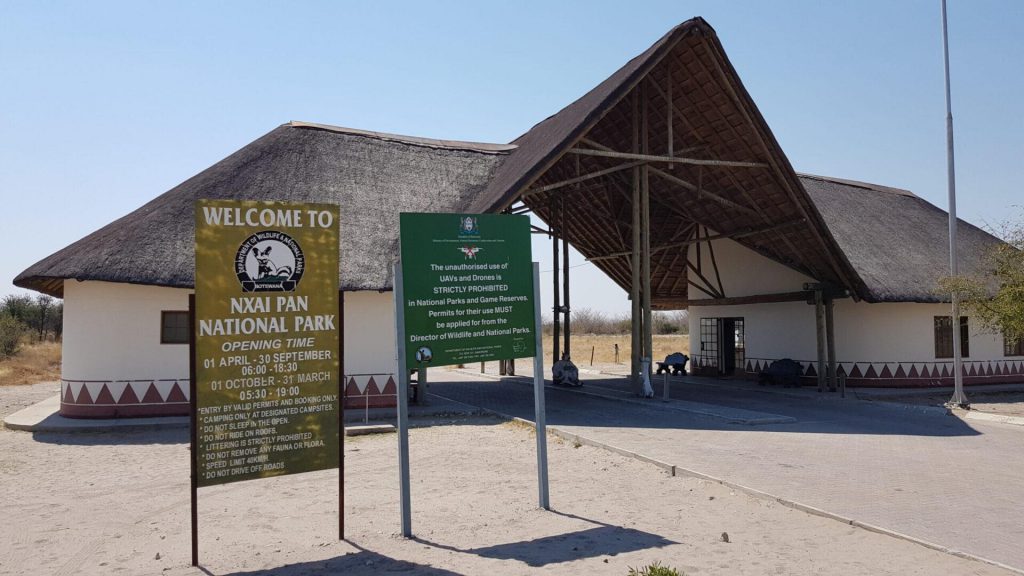Content
Discover the untamed beauty of the Nxai Pan National Park in Botswana, a wildlife sanctuary and a breathtaking African landscape.
Introduction to Nxai Pan National Park
Geographical Location
Located in northern Botswana, Nxai Pan National Park is a gem of the African savannah.
History and Recognition as a National Park
Established as a national park in 1992, Nxai Pan has long been a refuge for various wildlife species.
Meaning of the Name "Nxai Pan"
The name "Nxai Pan" refers to the salt and clay deposits, known as "pans," that characterize this region.
Features of Nxai Pan National Park
Description of the Pans
The pans are salt and clay deposits that create a unique and fascinating landscape in Nxai Pan National Park.
Climate and Seasonal Patterns
Nxai Pan experiences a savannah climate, with wet and dry seasons that influence wildlife migration.
Flora and Characteristic Vegetation
The vegetation of Nxai Pan is dominated by grasses and acacias, providing food and shelter for the animals.
Fauna and Biodiversity
The park is home to a wealth of biodiversity, including elephants, lions, cheetahs, and various species of birds and antelopes.
Ecosystem and Conservation in Nxai Pan
Endemic and Endangered Species
Nxai Pan is home to several endemic and endangered species, underscoring its importance as a conservation area.
Conservation and Protection Efforts
The government of Botswana and various international NGOs are working to protect and conserve this fragile and valuable ecosystem.
Impact of Climate Change on the Park’s Ecosystem
Climate change presents significant challenges for Nxai Pan, affecting migratory patterns and the availability of resources for wildlife.
Attractions and Activities in Nxai Pan
Wildlife Viewing
With a rich variety of wildlife, Nxai Pan offers exceptional opportunities for animal observation in their natural habitat.
Baines’ Baobabs
The Baines’ Baobabs, named after the British painter Thomas Baines, are a group of majestic trees and a must-visit attraction in the park.
Safaris and Guided Excursions
Safaris and guided excursions offer visitors the chance to explore the park safely and educationally.
Nature Photography and Bird Watching
For photography and bird-watching enthusiasts, Nxai Pan is a paradise, with its diversity of species and stunning landscapes.
Night Activities: Stargazing
With night skies free from light pollution, Nxai Pan is an ideal location for stargazing.
Traveling to Nxai Pan
How to Get There: Transportation Options
The park is accessible by road and air, with charter flights available to nearby airstrips.
Best Time to Visit
The best time to visit Nxai Pan depends on what you hope to see. For the zebra migration, it’s best to visit during the rainy season.
Accommodation and Available Services
There is a variety of accommodations available in and around Nxai Pan, from campsites to luxury lodges.
Rules and Regulations for Visitors
It’s important to respect the park’s rules and regulations to ensure the safety of visitors and the protection of wildlife.
Local Culture and Nxai Pan
Tribes and Local Communities
Tribes and local communities have played a crucial role in the conservation of Nxai Pan and its rich biodiversity.
Interaction between Wildlife and the Community
Wildlife and local communities have coexisted in Nxai Pan for centuries, a relationship reflected in the cultural traditions of the region.
Local Events and Festivals
Local events and festivals provide visitors with the opportunity to experience the culture and traditions of the people of Botswana.
Research and Studies in Nxai Pan
Ongoing Research Projects
Scientists conduct studies and research projects in Nxai Pan to better understand its unique ecosystem and the challenges it faces.
Significant Findings and Discoveries
Studies in Nxai Pan have led to significant discoveries, contributing to a greater understanding of the region’s fauna, flora, and climate.











